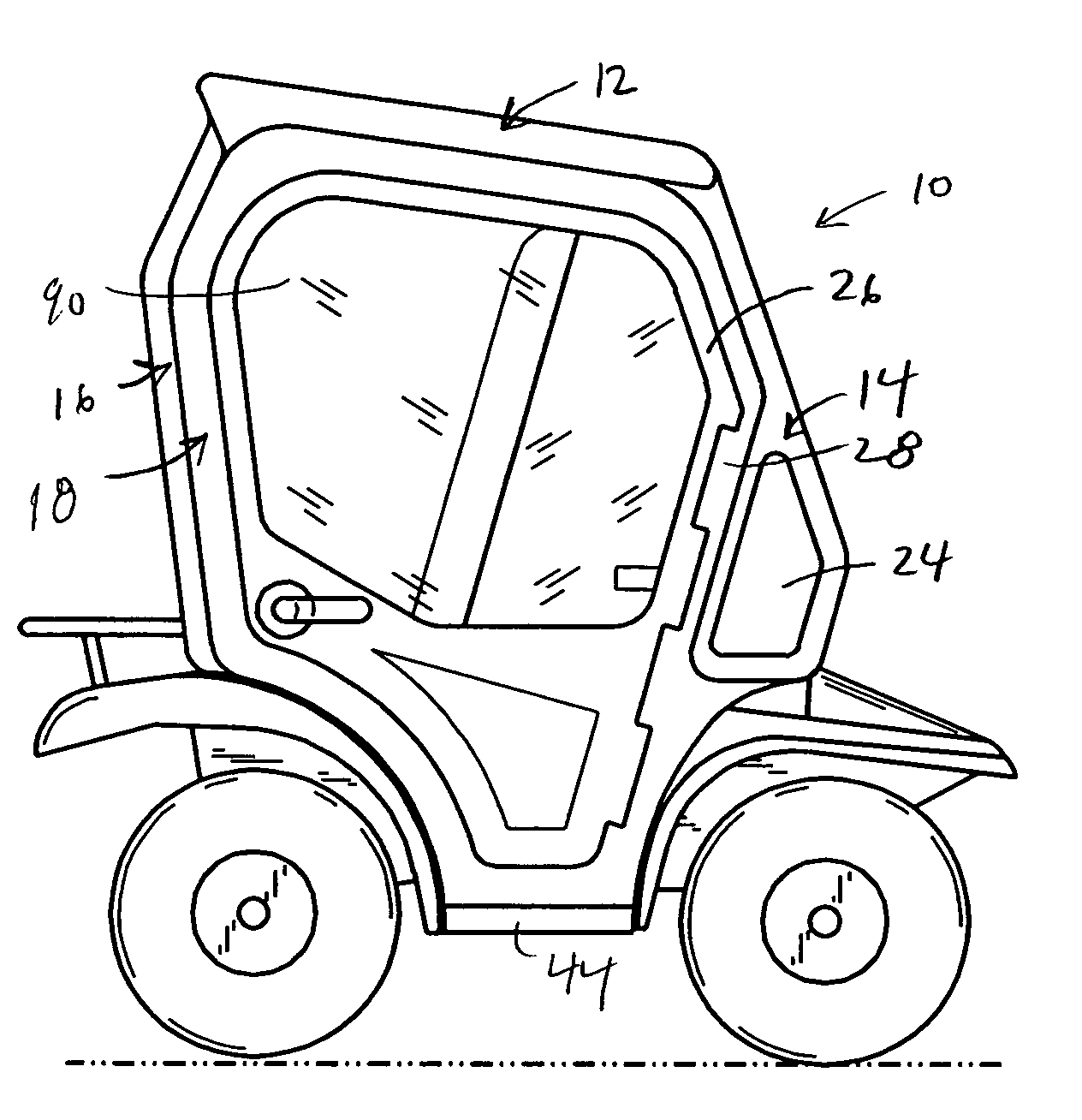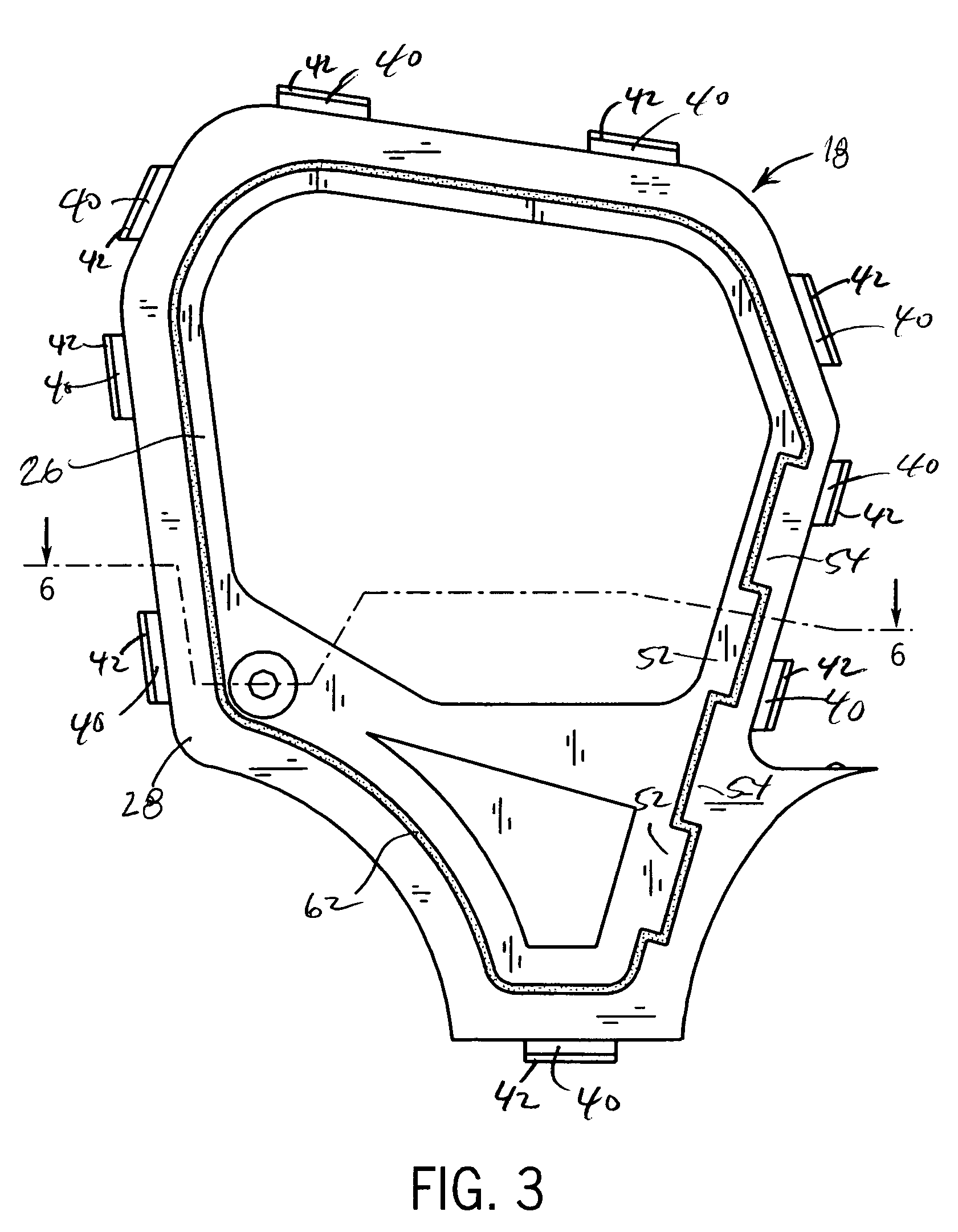Vehicle cab
a technology for vehicles and cabs, applied in the field of vehicles, can solve the problems of not being able to provide an enclosed interior for the rider, not being able to meet the higher speed of atvs, etc., and achieve the effects of improving the wall thickness, good structural rigidity, and robust appearan
- Summary
- Abstract
- Description
- Claims
- Application Information
AI Technical Summary
Benefits of technology
Problems solved by technology
Method used
Image
Examples
Embodiment Construction
[0040]As mentioned, the present invention provides an enclosure or cab for a vehicle, such as small motorized tractors, ATVs, golf carts, small construction vehicles, and the like. The cab is made of double walled plastic construction. An HDPE resin is one preferred plastic and twin-sheet vacuum thermoforming or blow molding techniques can be used to mold the resin. The plastic double wall construction makes the cab strong, durable and impact resistant as well as lightweight and easily to install and remove from the vehicle. The double wall construction also has the benefit of allowing multiple features of the cab to be molded at the same time, together in the same panel. For example, the door and door frame of a panel can be formed in one twin-sheet molded panel and then cut apart from each for assembly. This reduces waste of the material and also saves labor, for example in that the cutting operation to remove the door from the panel also defines the doorway within the door frame....
PUM
| Property | Measurement | Unit |
|---|---|---|
| perimeter | aaaaa | aaaaa |
| distances | aaaaa | aaaaa |
| speed | aaaaa | aaaaa |
Abstract
Description
Claims
Application Information
 Login to View More
Login to View More - R&D
- Intellectual Property
- Life Sciences
- Materials
- Tech Scout
- Unparalleled Data Quality
- Higher Quality Content
- 60% Fewer Hallucinations
Browse by: Latest US Patents, China's latest patents, Technical Efficacy Thesaurus, Application Domain, Technology Topic, Popular Technical Reports.
© 2025 PatSnap. All rights reserved.Legal|Privacy policy|Modern Slavery Act Transparency Statement|Sitemap|About US| Contact US: help@patsnap.com



